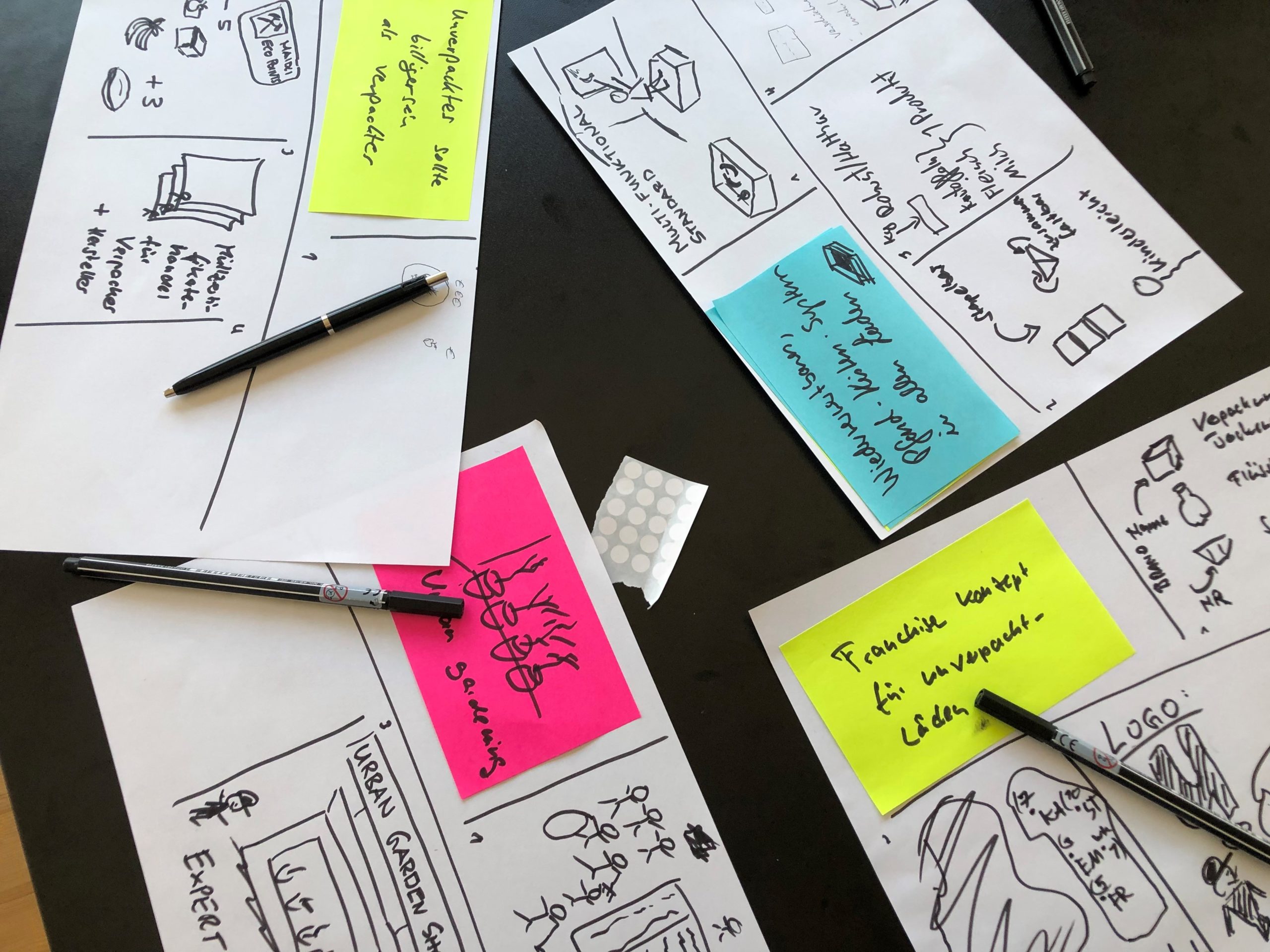In the interview with Jennifer Pauli, coach for Design Thinking at the Weinberg Campus Accelerator, the innovation consultant explains what exactly is hidden behind this term and why startups in particular can benefit from it. As a coach she has been supporting companies for years in putting users in the center and achieving real added value for them in the product or service.
Design Thinking is a mystery to many. How did you get into this topic?
I came to this topic by accident. I got a lift from Berlin to Jena. The driver had just done this advanced training in Potsdam and told me about it. Then I went to the open day and was immediately enthusiastic. I wanted to do something completely different than at university. My creative spirit just felt at home there. In 2013, I completed an academic training at the School of Design Thinking and today I pass on my knowledge of methods and develop innovation or product development processes for teams and companies based on the Design Thinking approach.
“The goal of Design Thinking is to […] identify opportunities for innoavtion […].”
Jennifer Pauli
What exactly does Design Thinking mean?
It is, in short, a user-centered innovation process in which interdisciplinary teams are guided through the process and all participants are supported in trusting the open-ended process so that a successful result emerges in the end. The goal is to identify opportunities for innovation and to develop products or services that deliver real added value for users or solve a concrete problem through the tightly timed process and systematic interaction with users.

That sounds incredibly promising! Why do you think companies or startups should go through a Design Thinking process?
Our brains are wired to think immediately in terms of solutions. But that doesn’t always lead to the goal, especially if you want to solve problems that you don’t have yourself. Design Thinking gives you the chance to first understand what the world of all stakeholders, users and affected parties actually looks like. It’s about building empathy, listening and being faster and more innovative in developing solutions through a good diagnostic phase. Through this process, companies get to know their external and internal users better and can develop tailored solutions. Popular topics include: intranet launch, expanding the product portfolio, redesigning a meeting culture, developing digital services or even responding to current trends such as autonomous driving, smart home, or connected devices.
Another advantage is that employees from different departments often work together for the first time. This sustainably improves the flow of information in the company and also lays the foundation for cross-functional collaboration.
How does a Design Thinking process actually work?
In terms of time, it depends on the desired goal, i.e. how elaborate and how often the prototype should be tested in the end. In terms of content, the first step is always “understanding”, i.e. analyzing the problem from different perspectives. As soon as the specific target group, its environment and the problem can be clearly understood and named, the second phase, finding a solution, begins. This includes prototyping and testing.
“Transferring solutions from an intensive Design Thinking sprint into everyday life is a very special challenge.”
Jennifer Pauli
Is one Design Thinking Process enough? Or do you have to work on it continuously?
Design Thinking comes with a very agile mindset. If that is to be established in the company, only the introduction of new methods, is not enough. It should go hand in hand with a more holistic change process and cultural change. The transfer of solutions from an intensive Design Thinking sprint into everyday life is a very special challenge. Here, it is important to involve the relevant specialist departments or stakeholders as early as the Design Thinking process in order to be able to implement changes as seamlessly as possible.
“If you’re not ashamed of your first prototyoe, you’re not testing early enough.”
Jennifer Pauli
Why can startups in particular benefit from Design Thinking?
I recommend startups to work very strongly with Design Thinking in the beginning, to always have user feedback in mind and ideally to define personas as well. It’s important to always ask yourself “Who is our product/service for?”, “What added value do we generate for our users?” or “What would our user say about it?” Early on, establishing feedback loops can save a lot of time and also monetary resources. According to the Design Thinking mindset, they say “If you’re not ashamed of your first prototype, you’re not testing early enough”. This is exactly what I want all startups to take away. Be willing to learn together with your users.
Do you have any other advice you would like to give to founders?
Yes, definitely. My tips are:
- Be aware that you can be wrong, but that’s not a disadvantage, it’s an advantage, because that’s how you can learn and get even better.
- Stay curious.
- Don’t let perfection take over.
- Dare to test as early as possible and learn everything possible about your target group (applies to B2B as well as B2C).
- Have fun!
About Jennifer Pauli

Jennifer Pauli works as a freelance innovation consultant and “Agile Facilitator” to bring user-centered thinking back into focus and to foster innovation. She develops workshops for large companies and startups and helps them with topics such as innovation, strategy or team development.
More info here: https://www.jenniferpauli.de/
You can also read the article in German.
Join us
Do you want to found your own startup and need help bringing it forward? Then find out more about our Accelerator Program here!

Author: Kathleen Bier
Online Marketing & Project Management




